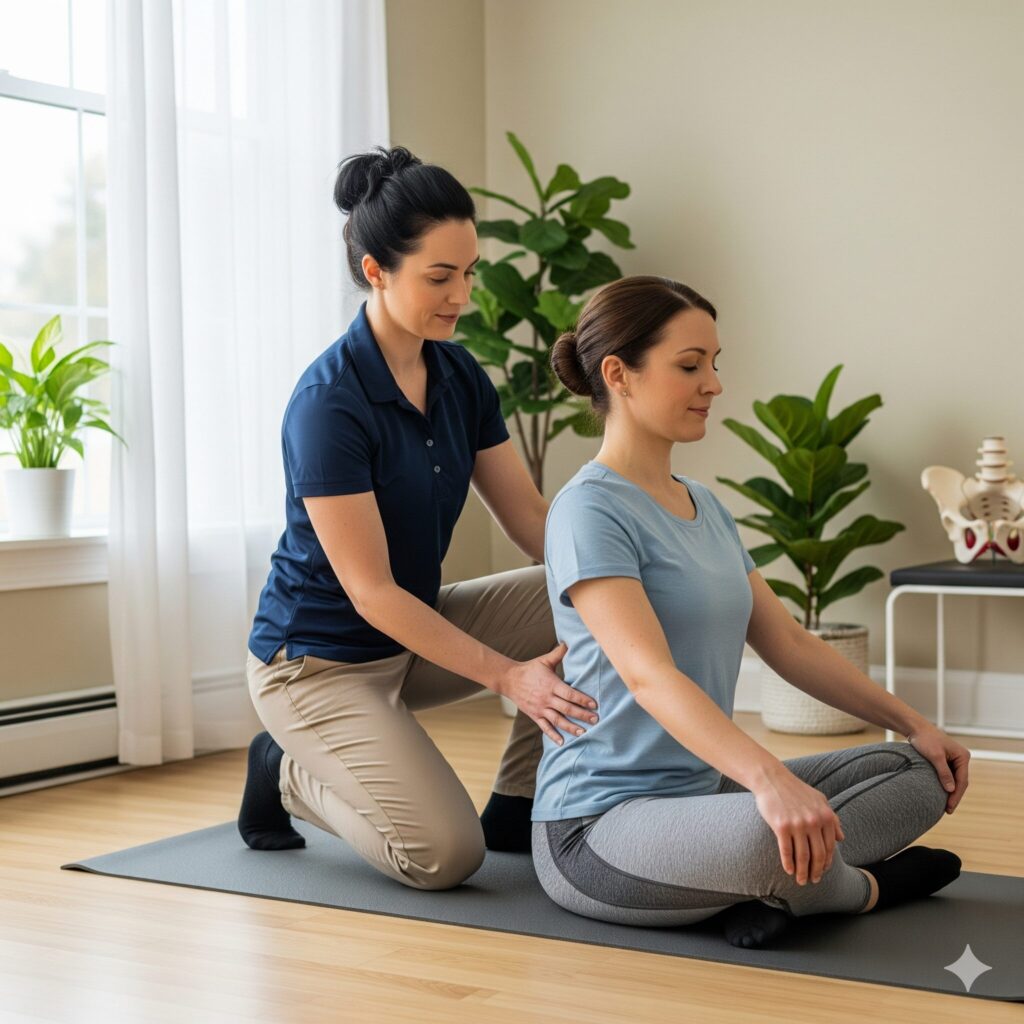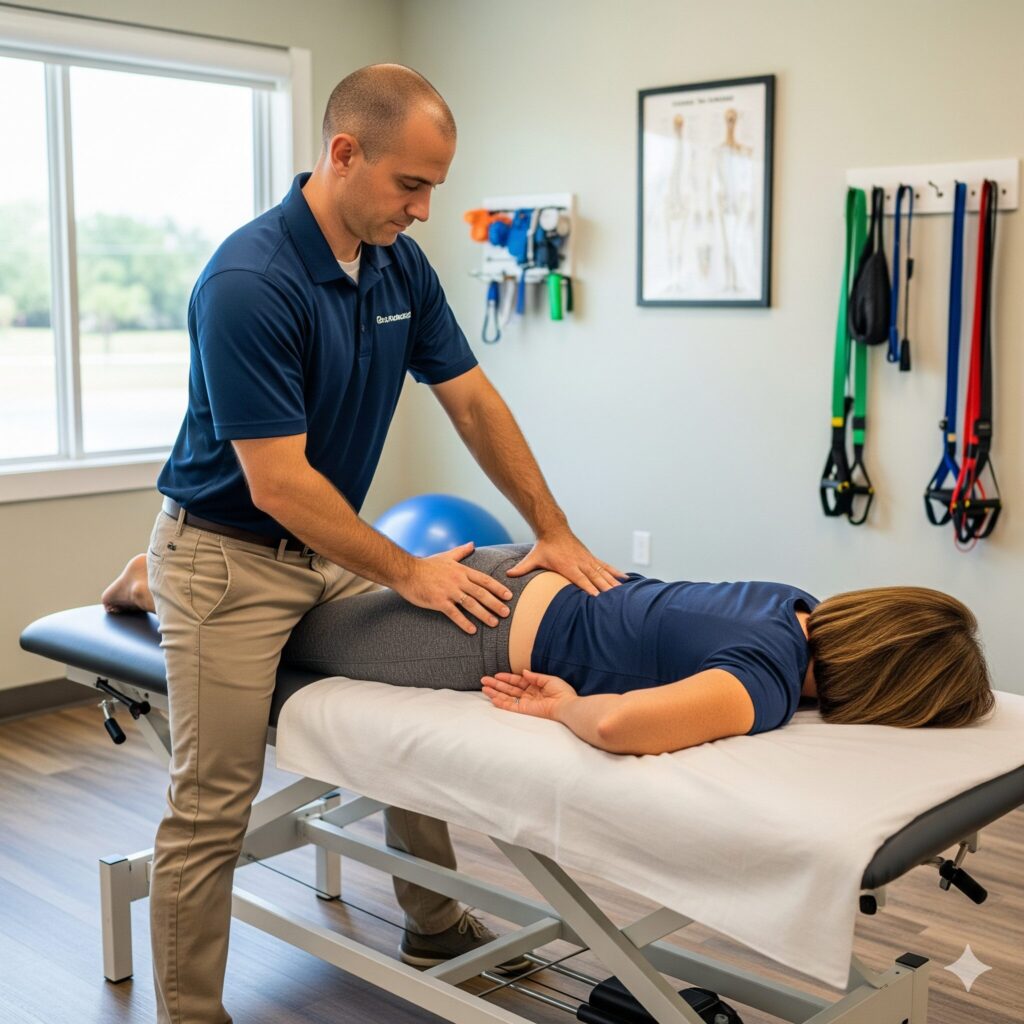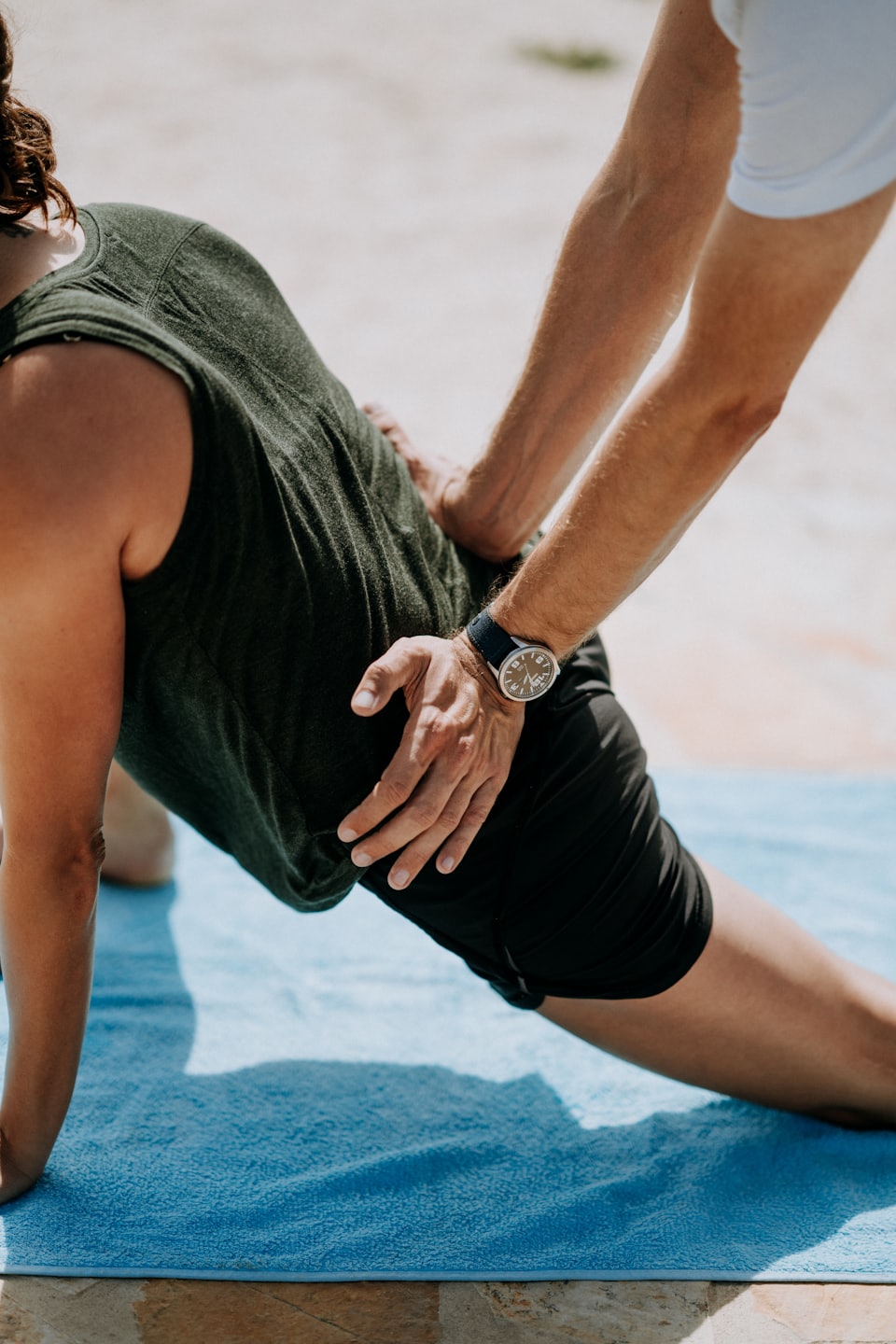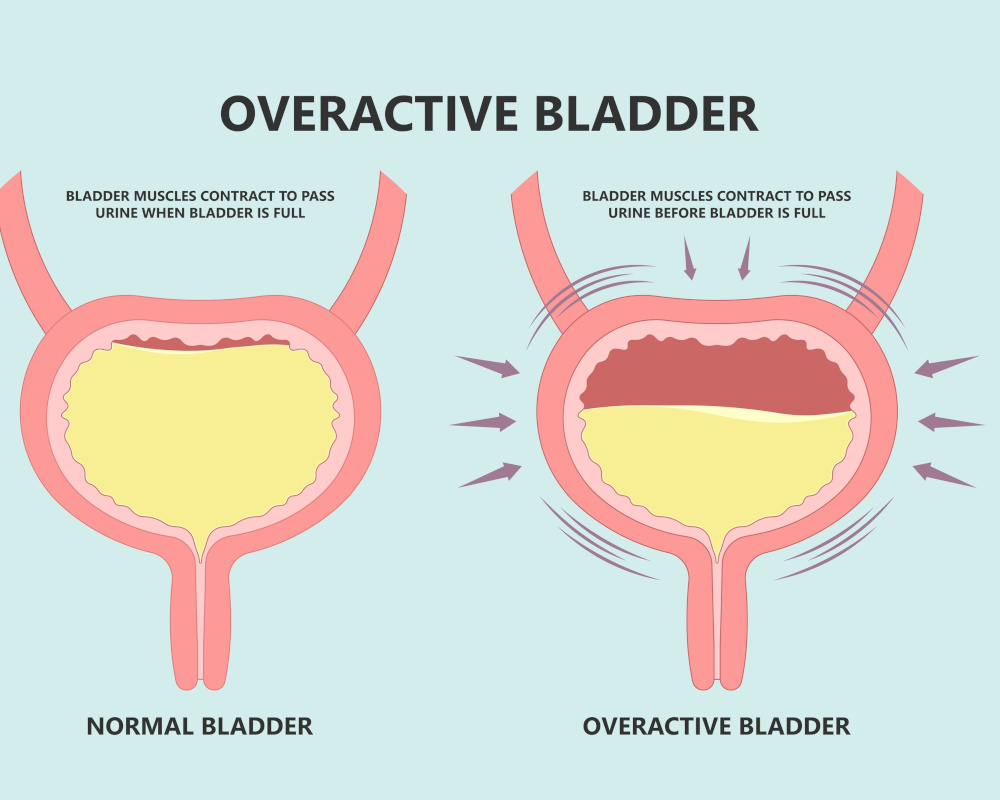Meet Our Pelvic Health Specialist
Discover our skilled and caring team dedicated to improving your pelvic health at Southland Urology with pelvic floor therapy.

Lacey T. OTR/L
Licensed Occupational Therapist
Lacey graduated from the prestigious Occupational Therapy program at the University of Southern California and brings extensive experience in pelvic floor therapy, combining clinical expertise with compassionate care. She is a celebrated clinical instructor at California State Dominguez Hills Occupational Therapy program.
We are Committed to Pelvic Health Excellence
Southland Urology is one of the only urology practices in Orange County with in-office pelvic floor therapy. We are committed to advancing pelvic floor therapy, focusing on personalized care and improving quality of life for our patients across a wide range of disorders.



Pelvic Floor Therapy Service Overview
Discover how pelvic floor therapy with Southland Urology supports your health through specialized treatments improving strength, function, and comfort.

Personalized Treatment Plans
Each therapy plan is tailored to your unique needs, ensuring the most effective approach for improving pelvic floor health.
Comprehensive Therapy Techniques
Our services include manual therapy, biofeedback, and targeted exercises to promote healing and strength.
Support for Multiple Conditions
Therapy addresses issues such as urinary incontinence, pelvic pain, and postpartum recovery, benefiting both men and women.
A Comprehensive Guide to Pelvic Floor Therapy
Pelvic floor therapy is a specialized form of therapy designed to treat a wide range of conditions related to the pelvic floor muscles. These muscles form a supportive sling at the base of your pelvis, playing a crucial role in bladder and bowel control, sexual function, and core stability. When these muscles are too weak, too tight, or uncoordinated, they can lead to pain and dysfunction. A certified pelvic floor therapist can help you regain control, reduce pain, and restore function.
What is Pelvic Floor Therapy?
Pelvic floor therapy, or pelvic floor therapy (PFT), is a non-surgical treatment approach for dysfunctions in the pelvic floor muscles. A specially trained pelvic floor therapist conducts a thorough evaluation, which may include an external and internal assessment, to understand the strength, endurance, and coordination of your pelvic floor muscles.
Based on this assessment, the therapist creates a personalized treatment plan that may include:
- Manual Therapy: Hands-on techniques to stretch, massage, and release tension in tight muscles.
- Therapeutic Exercise: Targeted exercises to either strengthen weak muscles (like Kegels) or relax overly tight muscles (reverse Kegels).
- Biofeedback: Using special training to help you “see” or “hear” how your pelvic floor muscles are working, improving your ability to control them.
- Education: Learning about bladder and bowel habits, pain management strategies, and lifestyle modifications.
What Conditions Can Pelvic Floor Therapy Help?
Pelvic floor therapy is an effective treatment for a surprisingly broad array of conditions affecting both men and women. These include:
- Urinary Incontinence (Stress, Urge, and Mixed)
- Overactive Bladder (OAB)
- Pelvic Organ Prolapse
- Chronic Pelvic Pain Syndrome (CPPS)
- Interstitial Cystitis (IC) / Painful Bladder Syndrome
- Chronic Prostatitis
- Painful Intercourse (Dyspareunia)
- Vaginismus and Vulvodynia
- Post-Prostatectomy Incontinence
- Pregnancy and Postpartum-Related Pain and Weakness
- Fecal Incontinence and Constipation

Stress Incontinence (Male and Female)
Stress Urinary Incontinence (SUI) is the involuntary leakage of urine during activities that increase abdominal pressure, such as coughing, sneezing, laughing, or exercising. It occurs when the pelvic floor muscles and urethral sphincter are too weak to hold back urine under pressure.
- How Therapy Helps: Treatment focuses on strengthening the pelvic floor muscles to provide better support for the bladder and urethra. Your therapist will ensure you are performing Kegel exercises correctly and design a progressive strengthening program to restore continence and confidence.
Urge Incontinence / Overactive Bladder (OAB)
Urge incontinence involves a sudden, intense urge to urinate, followed by involuntary urine loss. It’s the primary symptom of Overactive Bladder (OAB), which also includes frequent urination. This condition is often caused by bladder muscle spasms and uncoordinated signals between the bladder and the brain.
- How Therapy Helps: The focus here is on calming the bladder. Therapists teach urge suppression techniques, bladder retraining (gradually increasing the time between voids), and pelvic floor muscle relaxation exercises. The goal is to restore normal bladder signaling and reduce urgency and frequency.

Female Pelvic Pain / Chronic Pelvic Pain Syndrome (CPPS)
Female chronic pelvic pain is persistent pain in the pelvic region lasting for more than six months. It can stem from various sources, but often involves pelvic floor muscles that are overly tight and in a state of constant spasm (hypertonicity). This can lead to conditions like dyspareunia (painful sex), vulvodynia, and generalized pelvic pain.
- How Therapy Helps: Treatment is centered on down-training, or relaxing, these overactive muscles. A therapist will use manual therapy techniques to release trigger points, teach diaphragmatic breathing and relaxation exercises, and use biofeedback to help you learn to “let go” of pelvic floor tension.
Interstitial Cystitis (IC) / Painful Bladder Syndrome
Interstitial Cystitis is a chronic condition causing bladder pressure, bladder pain, and sometimes pelvic pain. The pain can range from mild discomfort to severe. It is often associated with extremely high tension in the pelvic floor muscles, which contributes to the cycle of pain and urinary urgency.
- How Therapy Helps: Pelvic floor therapy is a cornerstone of IC management. By using gentle, manual therapy techniques to release tension in the pelvic floor and surrounding tissues, therapists can significantly reduce bladder pain and urgency, breaking the pain-spasm cycle.

Male Pelvic Pain (CPPS) / Chronic Prostatitis
Chronic Prostatitis/Chronic Pelvic Pain Syndrome (CP/CPPS) is the most common form of prostatitis but is not caused by an active infection. It’s characterized by pain in the perineum, testicles, and penis, along with urinary issues and pain after ejaculation. Research shows that over 85% of men with CPPS have tense, overactive pelvic floor muscles.
- How Therapy Helps: A pelvic floor therapist will focus on manual therapy (both external and internal) to release trigger points in the pelvic floor muscles. Treatment also includes stretching, relaxation techniques, and education on avoiding activities that trigger flare-ups, providing significant relief for a condition often poorly managed by other means.
Postpartum Care: Addressing Stress Incontinence
It is extremely common for women to experience stress incontinence after childbirth. The strain of pregnancy and delivery can stretch and weaken the pelvic floor muscles. While it may be common, it is not normal and is highly treatable.
- How Therapy Helps: A therapist can assess the function of your pelvic floor muscles postpartum and create a safe, effective rehabilitation program. This involves re-training the deep core and pelvic floor muscles to work together again, resolving leakage and preventing long-term issues like pelvic organ prolapse.
Pregnancy: Pre-hab and Rehab
Pelvic floor therapy is beneficial both during and after pregnancy.
Rehab (Postpartum): After delivery, a therapist guides you through a safe recovery, addressing issues like diastasis recti (abdominal separation), pelvic pain, incontinence, and scar tissue management from a C-section or perineal tear.
Pre-hab (During Pregnancy): A therapist can help you prepare for childbirth by teaching you how to relax and lengthen your pelvic floor muscles (perineal massage), which can help reduce the risk of tearing. They can also help manage pregnancy-related pain, such as sacroiliac (SI) joint pain or sciatica.
Personalized Assessment
A thorough evaluation to tailor your therapy plan precisely.
Advanced Treatment Techniques
Utilizing manual therapy, biofeedback, and targeted exercises.
Convenience
Services offered in our Fullerton Towers location.
Patient-Centered Care
Focused on improving quality of life for both men and women.

Schedule Your Therapy Today
Take the first step toward personalized pelvic floor therapy care with our expert team.
